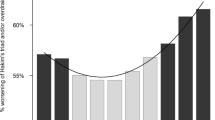Summary.
Background. Endoscopic Third Ventriculostomy (ETV) has become the treatment of choice for non-communicating hydrocephalus as it is able to couple high success rate (60–80%) with rare complications (about 5%). Nevertheless, which is the best postoperative care standard and whether or not it is possible to predict the success of the procedure is still discussed. Traditional neuro-imaging techniques show several limitations in the early postoperative period. Indeed, a decrease of the ventricular size is often minimal and not visible before three weeks, while, MRI visualization of a flow void signal through the third ventricle floor, seems to have a significant incidence of false positives. The use of postoperative ICP measurement after ETV has been suggested as a valid monitoring method, mostly in the early postoperative period. In previously unpublished data the authors observed the existence of different ICP patterns following ETV. This finding prompted the authors to search for a relationship among ICP patterns, stoma functioning and prediction of success.
Method. At our institution 26 consecutive patients affected by obstructive triventricular hydrocephalus underwent ETV. Among them there were 11 primitive aqueductal stenosis (AS), 5 shunt malfunctions, 2 third ventricle mass, 3 intraventricular cysts, and 5 patients with different lesions (1 quadrigeminal cistern arachnoidal cyst, 1 pineal region mass, 2 tectal tumours, and 1 supracerebellar abscess) compressing the aqueduct of Sylvius from outside named “ab estrinseco” aqueductal stenosis. All patients underwent postoperative Intra Cranial Pressure (ICP) monitoring by means of a ventricular catheter.
Findings. Transient ICP rises of any grade, mostly responsive to periodical liquoral subtractions, occurred shortly after ETV in as many as 50% of our patients. No major complications occurred. The effect of ETV on ICP trend was found to be variable among groups of patients thus identifying different ICP patterns. Patients with ab estrinseco Sylvian aqueduct compression showed the best effect on ICP, whilst, patients with intraventricular mass lesions causing triventricular hydrocephalus and shunt-dependent patients, revealed a clear trend to develop a more severe intracranial hypertension after ETV.
Conclusions. Patients with shunt malfunction and patients with intraventricular mass lesions, showing a more pronounced trend to develop severe intracranial hypertension after ETV, should always be considered for postoperative ICP monitoring in order to detect and, eventually, treat any ICP rises which may occur. Unfortunately, it is still difficult to assign a predictive value to the different postoperative ICP patterns. The authors encourage postoperative ICP monitoring in all patients in order to define all the possible ICP patterns following ETV.
Similar content being viewed by others
Author information
Authors and Affiliations
Rights and permissions
About this article
Cite this article
Rapanà, A., Bellotti, A., Iaccarino, C. et al. Intracranial pressure patterns after endoscopic third ventriculostomy. Preliminary experience. Acta Neurochir 146, 1309–1315 (2004). https://doi.org/10.1007/s00701-004-0377-2
Received:
Accepted:
Published:
Issue Date:
DOI: https://doi.org/10.1007/s00701-004-0377-2




